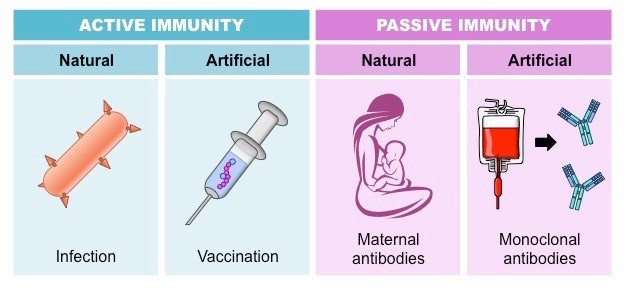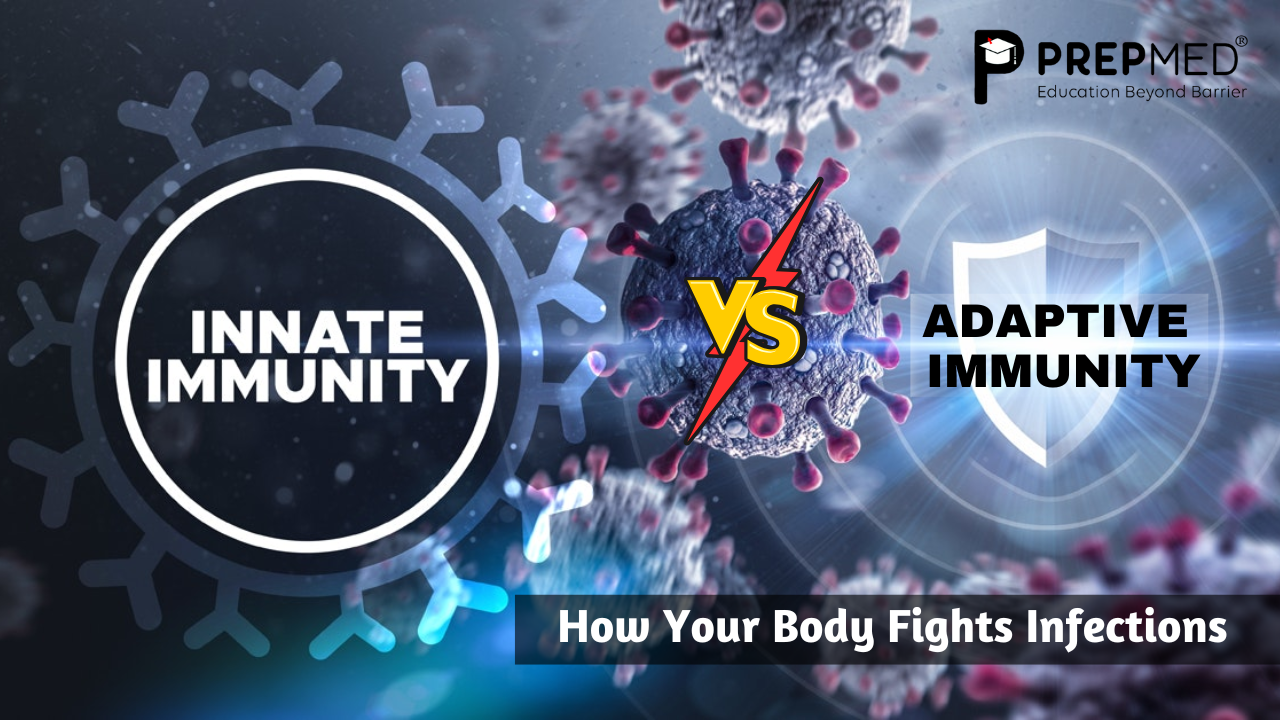January 17, 2025
Innate vs Adaptive Immunity: How Your Body Fights Infections
The two essential components of the body's defense against infections are innate immunity and adaptive immunity. Innate immunity provides rapid, non-specific protection through barriers like skin, mucus, and immune cells like neutrophils and macrophages, i.e., the first line of defense. Innate immunity doesn't target specific pathogens and acts rapidly.
In the other scenario, adaptive immunity is more precise than innate immunity but is slower. It involves specialized cells such as T-cells and B-cells that recognize and remember specific pathogens. The function of adaptive immunity is to provide long-term protection to the body through memory, thereby allowing the body to give response more effectively if the infection by the same pathogen occurs again. Altogether, these two immunity systems work coordinatively to keep you healthy.
Explaining antibody structure, types, and their importance in immunity.
Antibodies are often termed immunoglobulins, these are Y-shaped protein bodies manufactured by some white blood cells called B-cells in reply to pathogens such as bacteria and viruses. Antibodies are composed of two molecules of heavy chains in combination with two molecules of light chains and have specific variable indirect regions that can bind with antigens.
IgG, IgM, IgA, IgE, and IgD are the five major classes of antibodies with each designed to perform different functions in this defense mechanism. IgG is the antibody that provides long-term immunity, IgA works at protecting the mucosal surfaces, IgM is the immediate responder, IgE is known for allergic response and IgD assists in the activation of B cells. Collectively, antibodies neutralises the effect of pathogens and plays a vital role in preventing infections.
Active and Passive Immunity: How Vaccines and Antibodies Work
The two key ways in which the body defends against infections are Active and passive immunity.
- Active immunity is acquired when the body forms its own antibodies after exposure to disease, or when receiving a vaccine. Vaccines help stimulate the immune system to provide long-term protection by recognizing and remembering specific pathogens.
- Passive immunity, on the other hand, is where the individual body is provided with antibodies extracted from a different source such as the mother to child through breast milk or antibody injections. Passive immunity provides temporary and immediate protection, unlike active immunity, which provides long-lasting defense against future infections. Both these immunities play a crucial role in immunity.
How immunity is acquired actively (vaccination) or passively (antibody transfer)

There are two forms of immunity, active immunity and passive immunity which are essential in protecting the body against diseases.
Active Immunity (Vaccination)
Active immunity is obtained when the body is directly exposed to a pathogen or its parts as in case of vaccines and the body produces antibodies and memory cells by itself. Vaccines contain weakened and inactivated forms of pathogens which triggers the immune system to create a defense mechanism in the body without causing the disease. This type of immunity in contrast is long-term, this is because memory cells remember the pathogen and are more responsive if the body comes across the same pathogen in the future.
Passive Immunity (Antibody Transfer)
The other category is passive immunity because the antibodies are obtained from another source thus providing immediate protection. This can happen naturally, such as when a mother passes antibodies to her baby through the placenta or breast milk. It can also be artificial, for example, as a result of injection of blood products containing antibodies (for example, antivenom or monoclonal antibodies). Passive immunity provides protection temporarily, as the body does not synthesize its own antibodies.
Hence, active immunity is long-term immunity as compared to passive immunity, which provides a short-term defense. Both these mechanisms are important in protecting people from various types of infections.
Understanding the Five Types of Antibodies (IgG, IgA, IgM, IgE, IgD)
Immunoglobulins or antibodies are proteins that are produced by the immune system to fight against the body. The human body can produce at least five sorts of antibodies which play their definitive role in the immune system. Here's a breakdown:
1. IgG (Immunoglobulin G)
Function: IgG is the most dominant antibody found in the blood. It gives long-lasting defense since it immobilizes toxins, viruses, and bacteria while also stimulating other immune system components such as macrophages. It is also the only antibody capable of crossing the placenta and offers passive immunity to the fetus.
2. IgA (Immunoglobulin A)
Function: IgA is located in the mucosal locations normally in respiratory and gastrointestinal tracts, as well as found in saliva, tears, and breast milk. IgA plays a vital role in mucosal immunity by preventing pathogens from attaching to the surface of epithelial cells, helping protect against infections in mucosal surfaces.
3. IgM (Immunoglobulin M)
Function: IgM is the first antibody produced during the first exposure of the antigen to the immune system. Although IgM is present in smaller quantities than IgG, appearance of IgM in one's body indicates early stage of infection.
4. IgE (Immunoglobulin E)
Function: IgE has a chief role in allergic reactions and in resistance to parasitic infections. IgE that attaches to allergens releases histamine from mast cells causing allergic reactions to occur. It also contributes to immune responses to helminths (worms).
5. IgD (Immunoglobulin D)
Function: IgD is present in measurable levels in the blood and is present mainly on the surface of naïve B-cells. It is involved in the activation of B-cells and also involved in the immune response, however, its exact function is still unclear as compared to the other antibodies.
Humoral vs Cell-Mediated Immunity: The Role of B and T Cells
The immune system relies on two main mechanisms to defend the body against pathogens: humoral immunity and cell-mediated immunity. They are very much related since both involve distinct kinds of immune cells and responses, and they work together to provide protection.
Humoral Immunity (B Cells)
Humoral immunity is the type of immunity that is mediated by B cell, a form of white blood cell. Upon encountering an antigen (for instance a pathogen) B cells get activated and differentiate into plasma cells. These plasma cells are capable of producing antibodies that are also commonly referred to as immunoglobulins, which then circulate in the bloodstream. Antibodies attach themselves to particular antigens of pathogens and either immobilize them or indicate that they should be destroyed by other immune cells like macrophages. This kind of immunity protects against extracellular pathogens such as bacteria and viruses circulating within blood or any tissue.
Cell-Mediated Immunity (T Cells)
Cell-mediated immunity is primarily driven by T cells, another type of white blood cell. However, unlike B cells, T cells do not secrete antibodies into the bloodstream but rather they identify, attack, and destroy the infected cells. There are two main types of T cells involved in this response
- Helper T cells (CD4+): These cells activate and coordinate other immune cells the B and cytotoxic T cells. They release molecules (cytokines) that help to produce an immune response.
- Cytotoxic T cells (CD8+): It is responsible for the destruction of infected or damaged cells for example cells infected with viruses or cells transformed by cancer.






